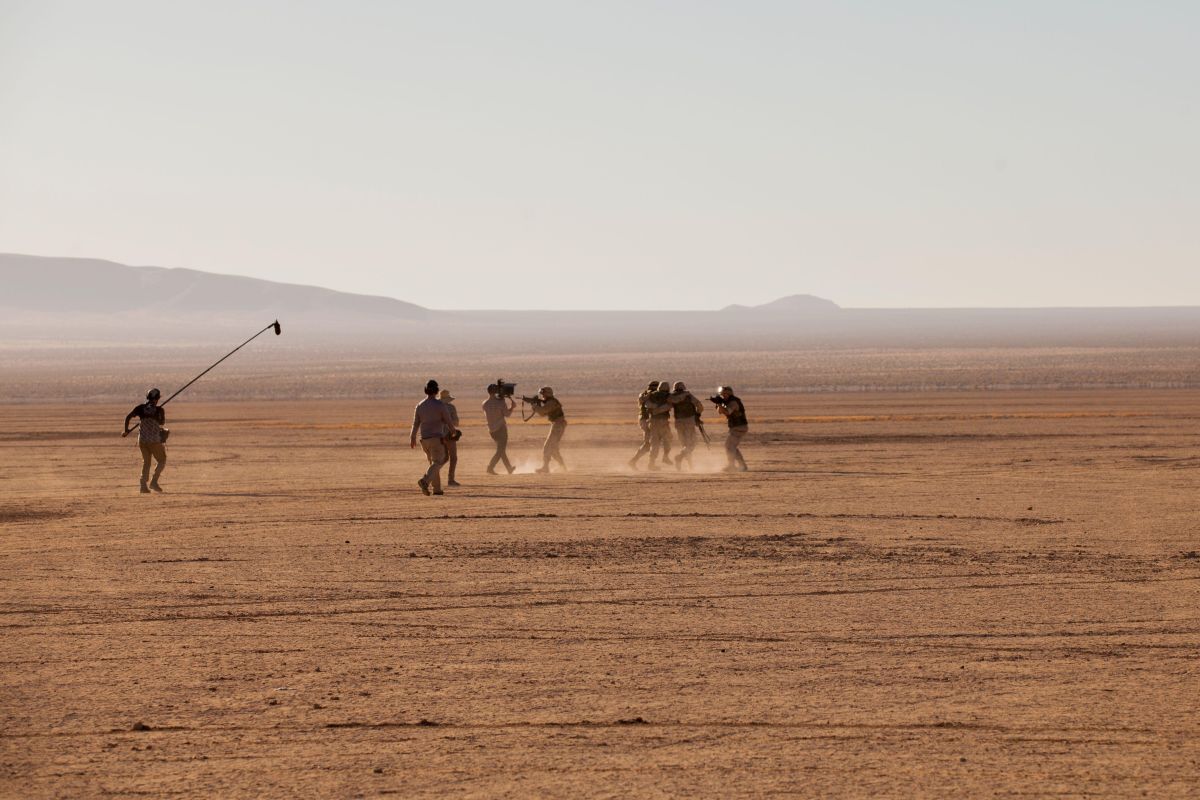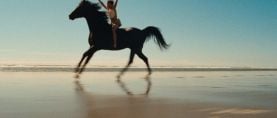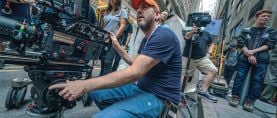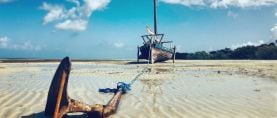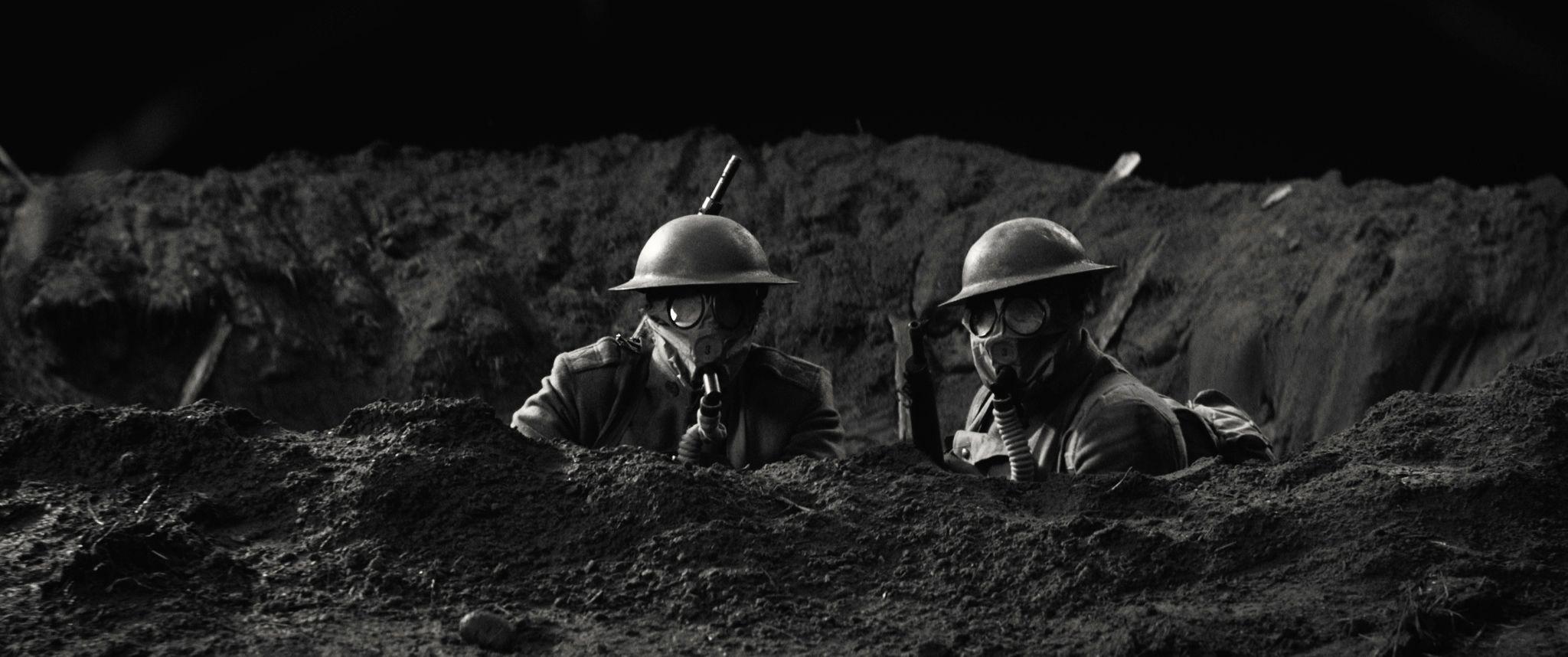
Digging Into Foxhole
Cinematographer Collin Brazie deploys large-scope photography on a small scale for director Jack Fessenden's sophomore feature.
Of all the low-budget, high-concept ideas an independent filmmaker could take on — the chamber play, the boxing film, the cabin in the woods — the war film can be the most challenging because of the immense amount of resources — costumes, sets, props, special and visual effects, sound design and on-screen action — needed to bring such a story believably to life. With Foxhole, independent feature director Jack Fessenden achieves a significant level of believability thanks to the contributions of the aforementioned departments and cinematographer Collin Brazie.
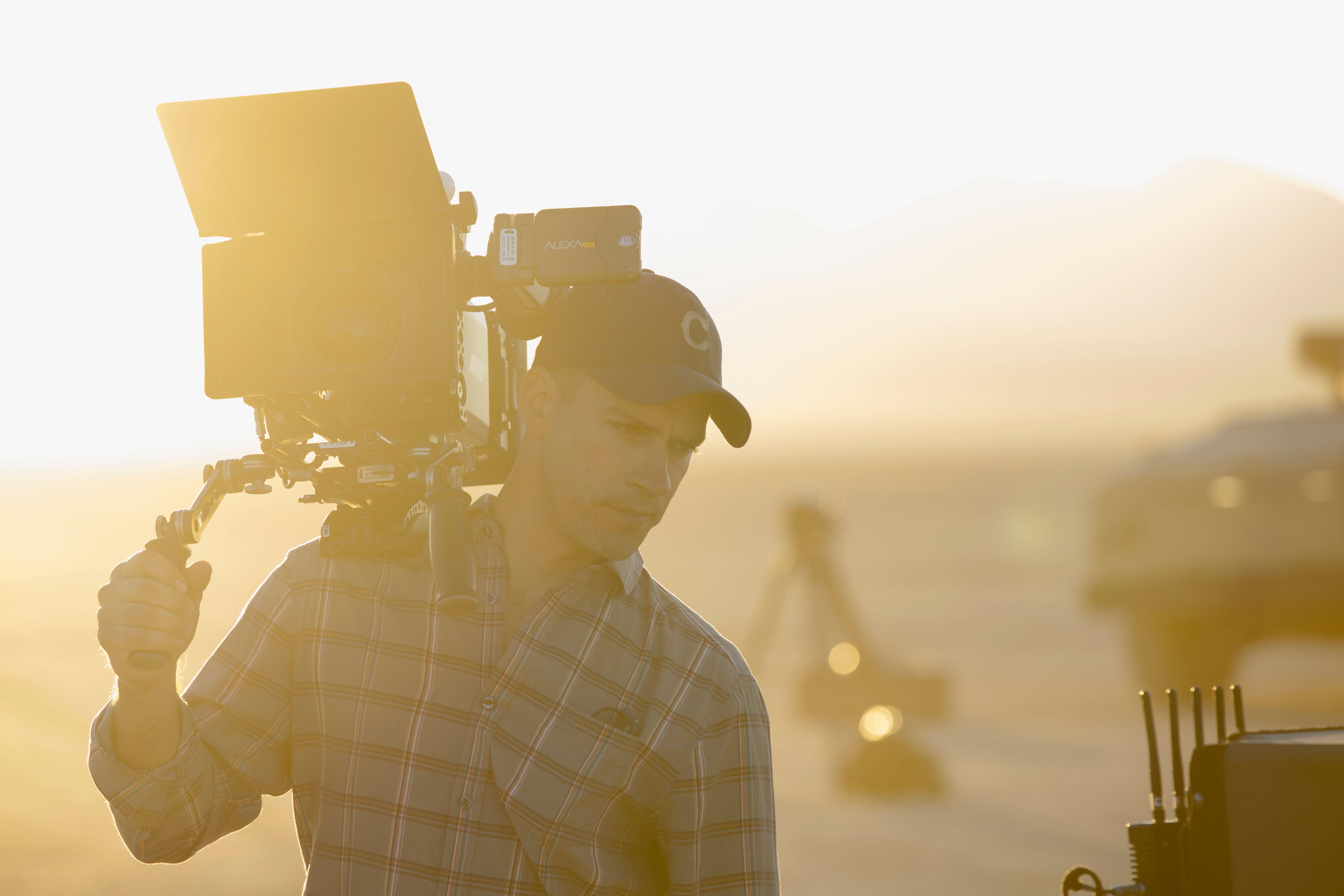
Foxhole is composed of three stories, each set during a different conflict: the American Civil War, in 1864; World War I, in 1917; and the Iraq War, in 2004. Each takes place in a confined space — a foxhole in the first two segments and a Humvee in the last — where a different group of American soldiers (all with one exception played by the same actors) must navigate the tenebrous moral issues around killing the complete strangers who are trying to kill them. By constraining almost all of the action to one small location for each segment, the filmmakers were able to extend more of their modest budget toward other departments, including camera.
According to Fessenden, Brazie joined the production a mere 10 days before the shoot and hit the ground running. "We quickly found our rapport as we made our way through the script," says the director. "On set, Collin was always two steps ahead, plotting how we would make our days, which sometimes called for as many as 25 setups. A highlight of our collaboration was the pass-off: a camera move that would be impossible to make with a single operator; Collin would start the shot, then he'd pass me the camera and I'd finish it off."
"With indie films there are always budget, time and crew constraints," says Brazie, who met with AC in New York City to discuss the lenses, lighting and visual language of Foxhole. "But our constraints led to interesting ideas."

American Cinematographer: Where did the idea of splitting these time periods up into different looks begin?
Collin Brazie: We went into pre-production wanting to do different looks for each period, whether that meant different lenses or different camera styles. Starting with the first one, the Civil War, we wanted something that felt painterly, with muted, earthy tones like you'll find in the work of Winslow Homer from this time period.
As for the optics, we shot the Civil War with Elite anamorphic primes. They're pretty big lenses, especially for a small camera team. They were a challenge to work with because we were working within the constraints of the foxhole and trying to make the cameras more compact and easier to manage.
Did you have a small camera?
Yeah, we shot with an Alexa Mini.

Why anamorphic?
The aspect ratio was an important detail for Jack, for the widescreen canvas and for the quality of the anamorphic glass.
Except for the Iraq War segment, which was done with spherical primes and zooms.
That's correct. For the part set in the First World War we used Cooke Anamorphic /i primes, and then in the last part we used spherical Arri Ultra Primes, Helios primes and Angénieux zooms.
What does “painterly” mean in regards to color and lighting?
The Civil War scene is supposed to take place during a foggy evening, so we wanted something that felt like magic hour. Our approach was to use a big, soft source. We hung a couple of Arri Skypanel s120s with two layers of full grid on the key source and moved standing Skypanel s30s around the set, bouncing them into a 6' x 6' Ultrabounce for edge lights. As far as color is concerned, we wanted it to be muddy and brown. You can feel warmth in the flesh tones.
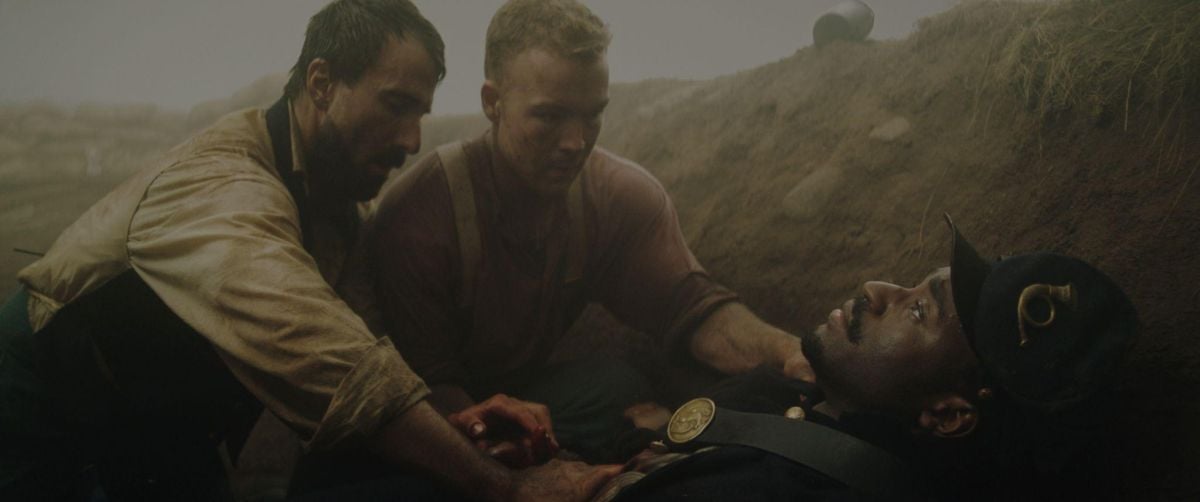
Where did you shoot the film?
Mostly Upstate New York, on private land. We had a makeshift outdoor soundstage, like a gigantic wedding tent, probably 40' by 80' and 20' tall, with no center post. We did that to block out the elements and give us more control over our lighting and fog. A lot of the fog was supplemented in postproduction, but we started with the real thing. We also flew out to Mojave, California for a day of exteriors in the desert.
Did you shoot in order?
We shot it chronologically, for three weeks. Each war was shot in five days.
What was your to the visual language in the first segment?
For the Civil War we wanted to have a free-flowing camera. In World War I we wanted scenes to play out in wide shots, with specific compositions and camera blocking.
Did you shoot the World War I segment in the tent as well?
All three parts were shot inside the tent. The first two were in literal foxholes, just holes dug into the ground in a field.
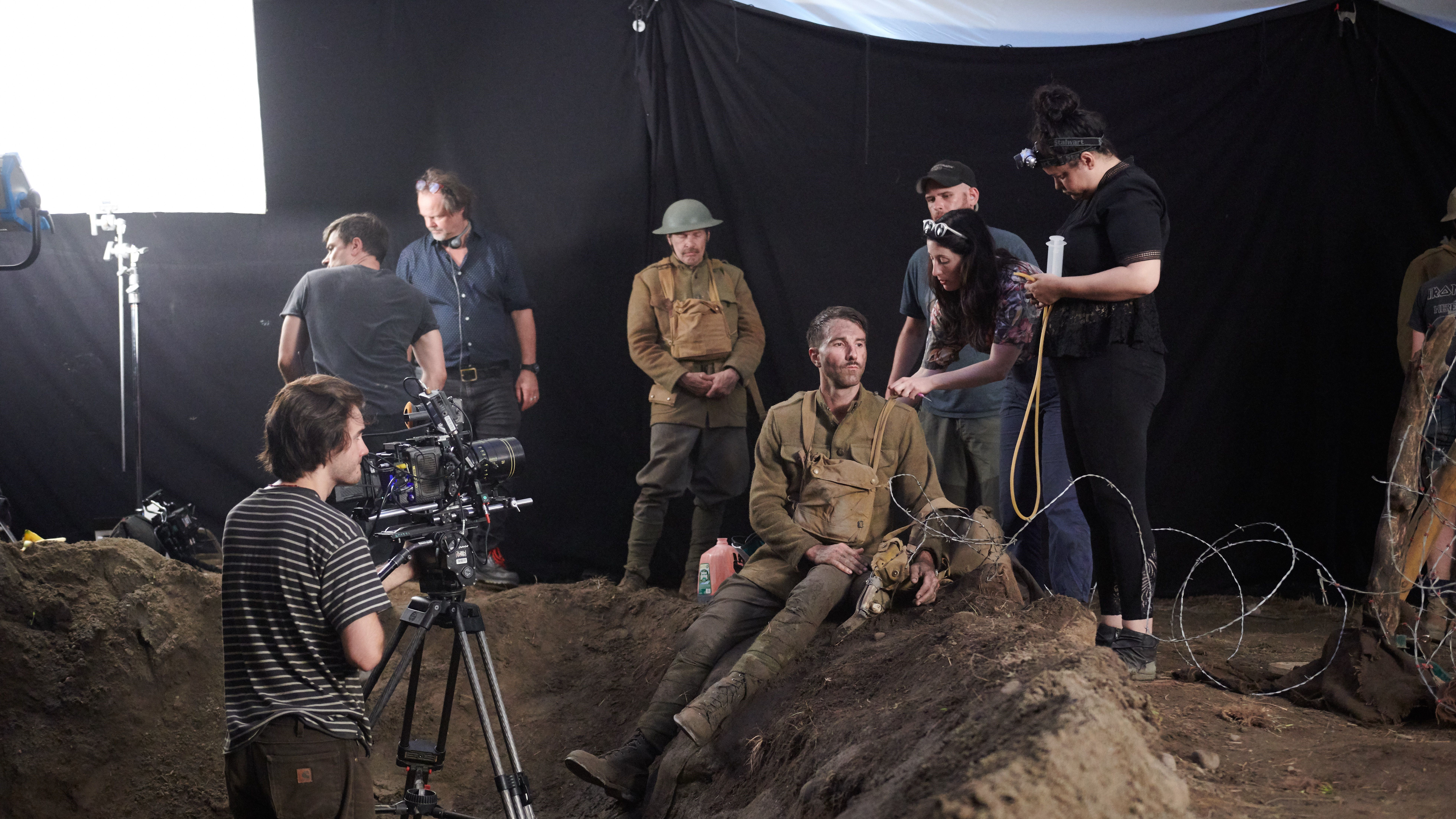
Tonally, World War I feels like a reversal of the Civil War. It's in black and white. The lighting is sharp and contrasty.
The World War I scenes are supposed to take place at night under a full moon, so we wanted it to have more contrast. But how do you do that without it feeling too fake? Do you go for a full-on day-for-night look? Doing it in black-and-white helps.
So does this dark void in the background, which stands in contrast to the previous segment.
That's the function of the story. In the first one, the fog was all around them, keeping them there. This time, it's clear — so clear the enemy can see you thinking, they say in the movie — and they're surrounded by darkness. It's the fear of the unseen is what's keeping them in the foxhole now.
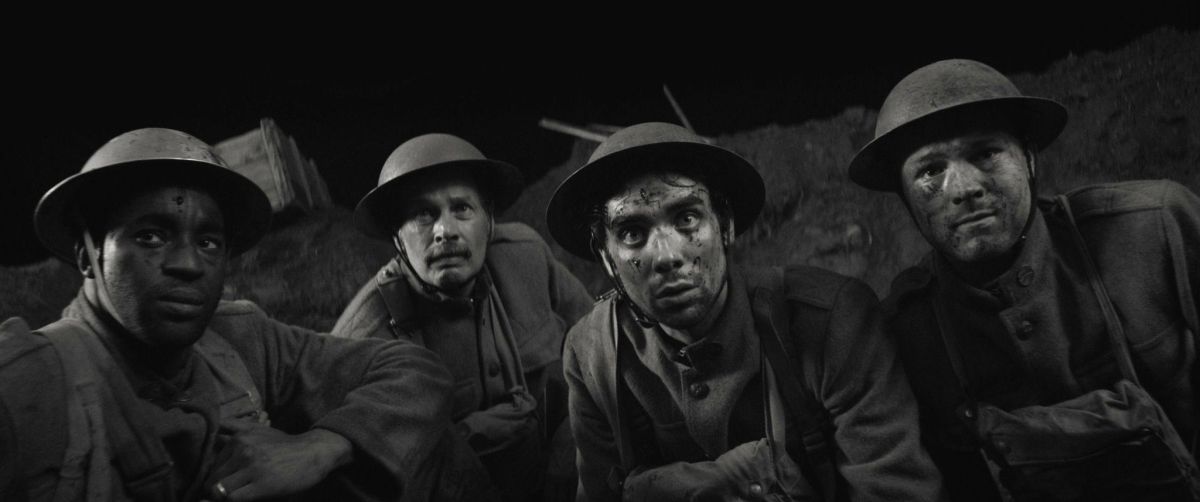
How did you black out the background?
Well, for the Civil War we hung a combination of diffusion silks and Ultrabounces from the inside of the tent to help extend the fog environment. For World War I we hung 20' x 20' and 12' x 12' solids in the background. Our moonlight key was a Skypanel s30 bounced into 8' x 8' or 6' x 6' Ultrabounce, depending on the size of the source we needed, with a hard edge moved them around and adjusted their intensity based on the shot. I was just trying to keep it as simple and uncomplicated as possible. I forget which cinematographer said, “Sometimes you make a beautiful image, and sometimes you make the day.”
Nicola Pecorini. That was from our podcast about The Man Who Killed Don Quixote.
I was just trying to make sure that Jack had enough for the edit because at this budget level, with the nature of independent film, you don't have time to be overly precious. I wanted big, broad lighting strokes that would allow us to pick off the wide shots, then come in for the close-ups without changing anything.
Let's talk about the Iraq War segment. You said you wanted it to feel more modern than the rest of the film. How so?
I guess I was thinking about how the Iraq War was the first time we started seeing war footage captured on consumer brand electronics and then televised. It's this blown-out, contrasty image. The camera whips around and does crash zooms. It's energetic and visceral.
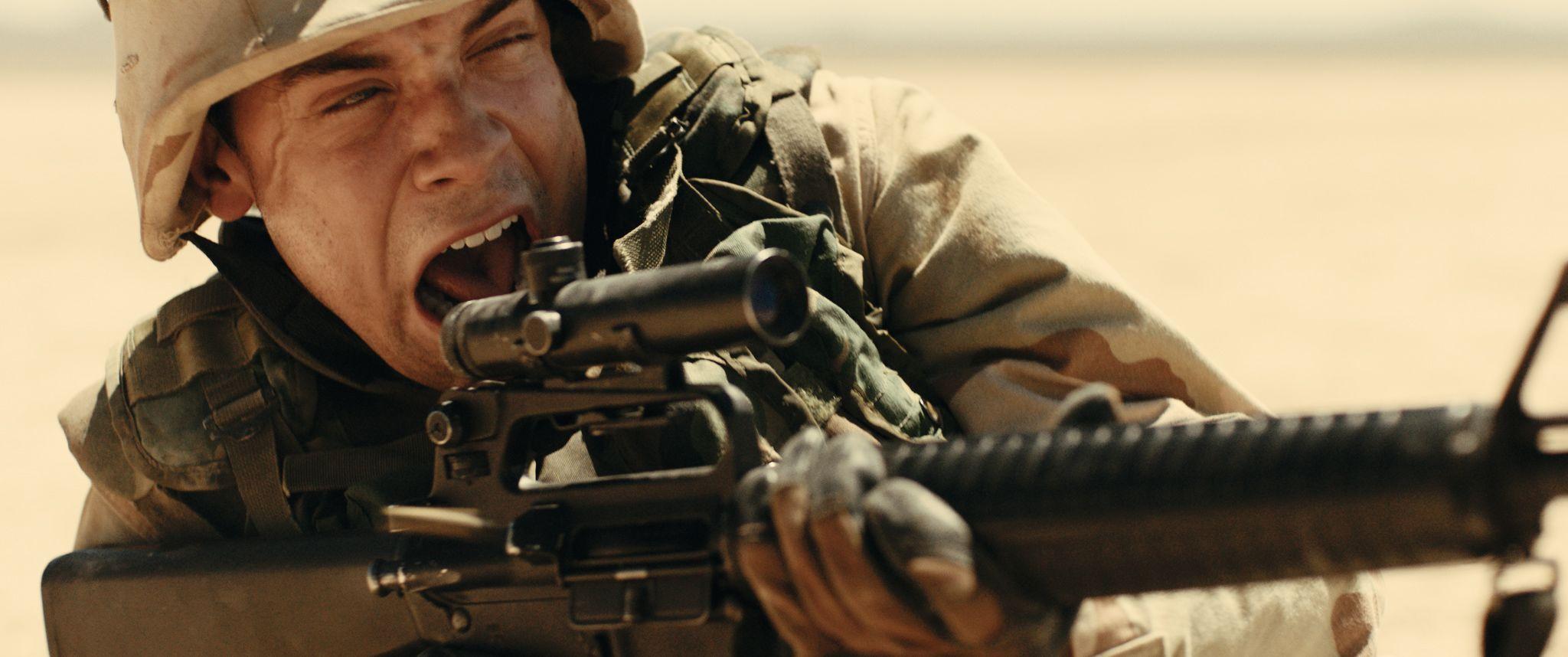
Can you talk about the quality of the light?
We were able to play around with it in different ways, because it starts out very hot and harsh and then it goes into sunset, into night then the sun comes up again. There were a lot of conversations about what to do about the windows. A documentary called Restrepo very much influenced our approach, and we ended up putting three 12' x 12' frames of half soft frost all around the vehicle and just blew it all out with lights from behind.
How did you do the transition?
As the sun went down, we dimmed the lights and started introducing more contrast on [the eastern] side of the car, then warmed up and dialed up [the western] keys to 100 percent, so we had some hard, almost a little fiery, sunlight coming from one side. Sometimes we would use the Joker for hard light through the windows and as the sun was supposed to be going down we'd open up pathways between the diffusion to let shafts of light through. Then we transitioned into a cool blue nighttime look before coming back to the morning.
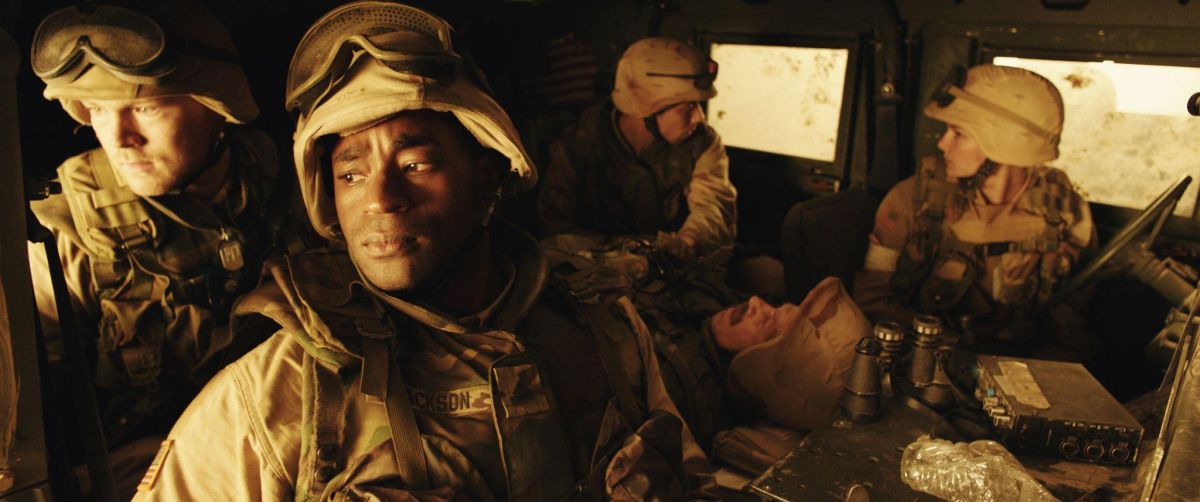
What lights did you use?
We had some Arri Skypanel 120s and 60s and a couple of hard sources like an 800w Joker HMI. We also had a 1' x 1' Litepanel with half-grid diffusion coming down through the top of the vehicle. That was our basic setup, and we would dial the intensity up or down depending on the time of day or what was happening in the scene.
This is the film's most confined segment in that the action, for the most part, never strays from the Humvee. How did that affect your camerawork?
It was just me in there with the camera on my knee or if there was enough space, up on my shoulder depending upon what we were shooting at the time. This was also the only part where we used zoom lenses, an Optimo Style 16-40mm. Jack really wanted to stay on wider lenses as much as possible, so we were on the 14mm Ultra Prime a lot, but we also wanted to give each of the actors a pass on the 50mm for a nice, sharp close-up. And certain things were built into the storytelling to keep it fresh.
Like that 720-degree camera move.
Yeah, that was fun to pull off. It was the camera on a tripod head on a hi-hat in the middle of the Humvee, then our key grip Chris Van Houten and gaffer Ben Duff took some speed rail with a t-bar at one end, ran it through the roof of the car and attached it to the camera's top handle so we could spin it from above.
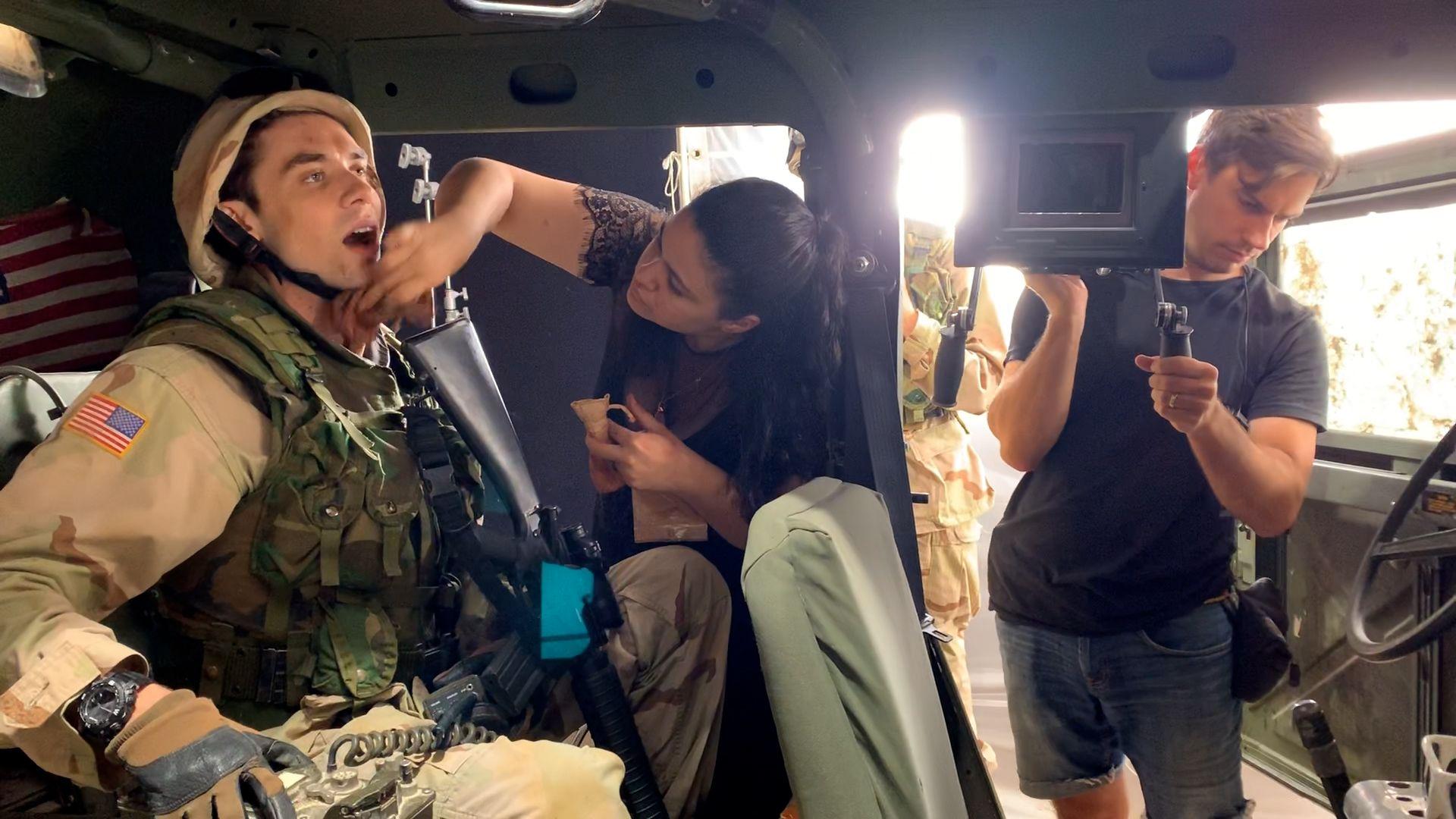
How much of the look of the film was accomplished on set versus the color grade?
The week before they started shooting, while they were putting up the tent and putting the finishing touches on the first foxhole, I went to the set with first AC Jesse Locascio and shot some tests. DIT James Felix McKenney and I would mess around with looks in Premiere Pro, then bring Jack in for his two cents. It was just an early pass that we could refer to later on.
Where did you do your color grade?
Cut + Measure, with colorist Chris Ramey. We did it all remotely.
What advice do you have to offer about making small-scale films with big ambitions?
No matter what I'm working on, my approach is always to be as prepared as possible and to get as much time in preproduction as I can, because that will save me on the day when I need to improvise. Having a director who knows what they want goes a long way, too. Jack already had a strong visual sense of what he wanted for each part, then I came on and helped him flesh it out. A DPs best friend is a director with a strong visual sense, or at least an opinion.
TECH SPECS
2.40:1
Camera | Arri Alexa Mini
Lenses | Elite Anamorphic Primes, Cooke Anamorphic /i Primes, Arri Ultra Primes, Helios Primes, Angénieux Zooms

Foxhole is available to stream on these platforms.
